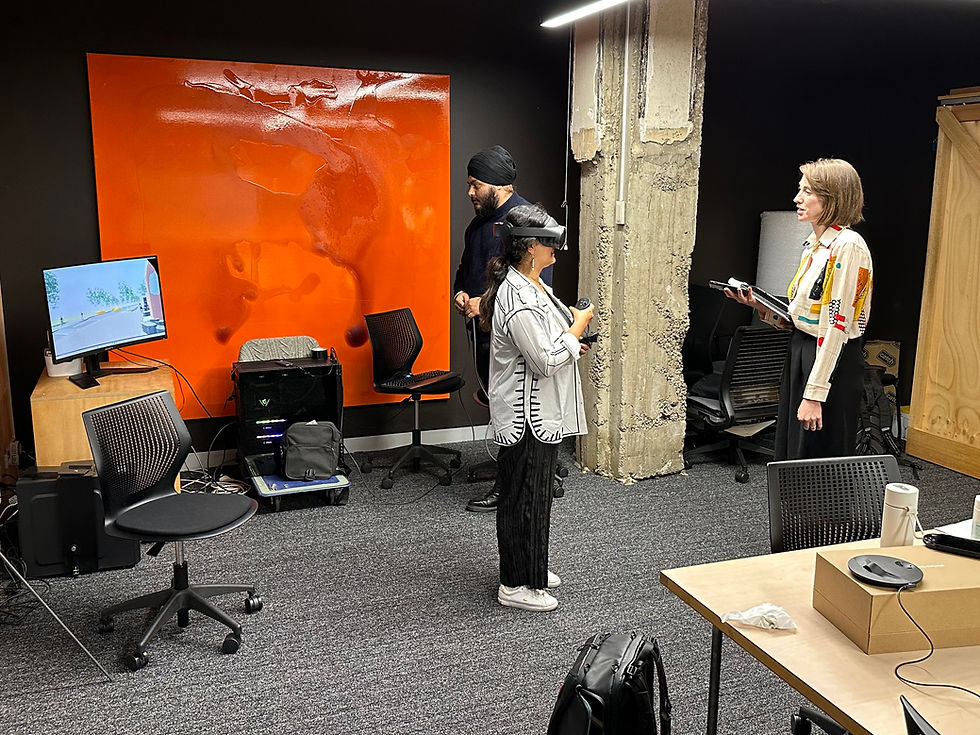

Insights from the front lines of human-centred design.
Research, reflections, and knowledge sharing. Sometimes observational. Sometimes provocative.
Not always polished. Always tied to the real world, and always honest.
Proving what works: human-centred testing for complex airport environments
Airports are among the most complex public environments we encounter. They demand seamless transitions between security, immigration,...
Auburn Hospital UX case study
Testing signage comprehension in one of Australia’s most linguistically diverse hospitals. Client: NSW Health Infrastructure Location:...
Virtual Usability Testing of Wayfinding in a Justice Environment: The Wyndham Law Courts Case Study
Abstract This paper presents the methodology, findings, and implications of a comprehensive VR-based usability study conducted at the new...
Inclusive airports, seamless journeys: a Humanics Collective perspective
In the dynamic environment of modern air travel, inclusive design has emerged as a cornerstone for enhancing the passenger experience....
Inclusive Design: Function first, for everyone
Most accessibility consultants start with compliance. We start with people—which is why we don’t call ourselves accessibility...
What You Can’t Afford to Learn Too Late
In airports, railway stations, law courts, and other complex environments, design decisions directly affect real-life outcomes. That’s...
Intuitive for Users, Deliberate for Designers
Some places just feel easy. You walk in and immediately understand where you are, where to go, and what to do. No searching. No...
You Don’t Need More Lighting. Rethinking Urban Behaviour Through Environmental Psychology
Urban safety isn’t always about what happens in a space—it’s about what people think might happen. A park might be statistically safe,...
Experiential Design: Shaping Emotion, Story, and Meaning
Experiential design turns spaces into stories. Done well, it doesn’t just make a place look good—it makes it feel right. It evokes...
What We Learned from the Court Case
The Sunshine Coast University Hospital ruling and its impact on inclusive wayfinding In 2021, the Federal Circuit Court ruled that the...
Wayfinding Strategy
Great signage isn’t where wayfinding starts. And it definitely isn’t where it ends. A successful wayfinding strategy begins long before...
Technology Integration
When Design Makes Tech Work for People Technology is everywhere. It powers our buildings, connects our services, and guides our users....
Evaluation, Research & Testing
Design that looks good on paper doesn’t always work in practice. That’s why we test it before it’s built, and after it’s in use. At...
No Silos, No Surprises
People-focused services only work when they work together Everyone talks about integration. But on projects, we still see silos....
Integrated User Experience & Service Design
Designing Services That Actually Work for People Most service failures aren’t caused by bad interfaces. They’re caused by poor...
Environmental Psychology
Designing Spaces That Shape How People Feel, Think, and Behave Every environment influences us. It affects how we act, how we feel, and...
You are here: why good maps still matter
Maps might seem outdated in a world of apps and GPS, but in complex places like hospitals, universities, or civic precincts, a...
- Page 1

















